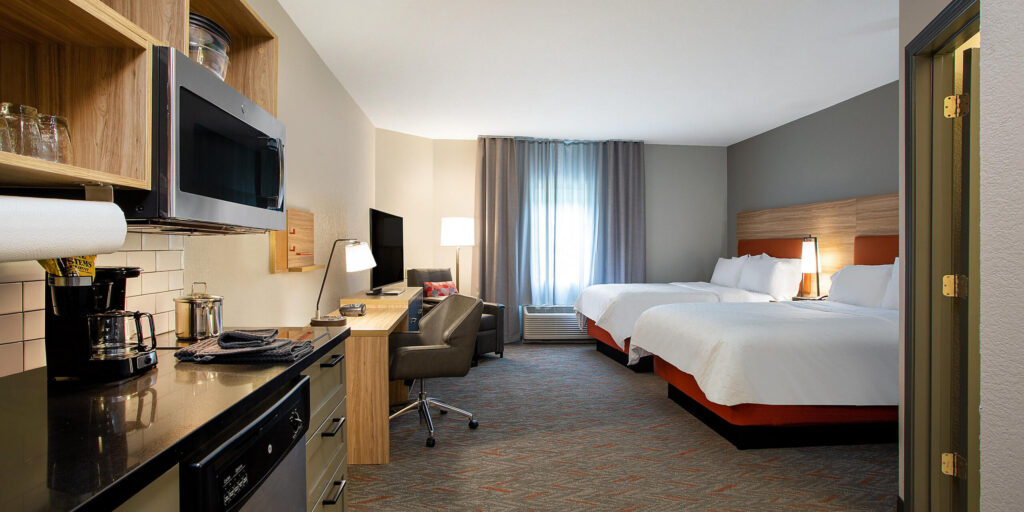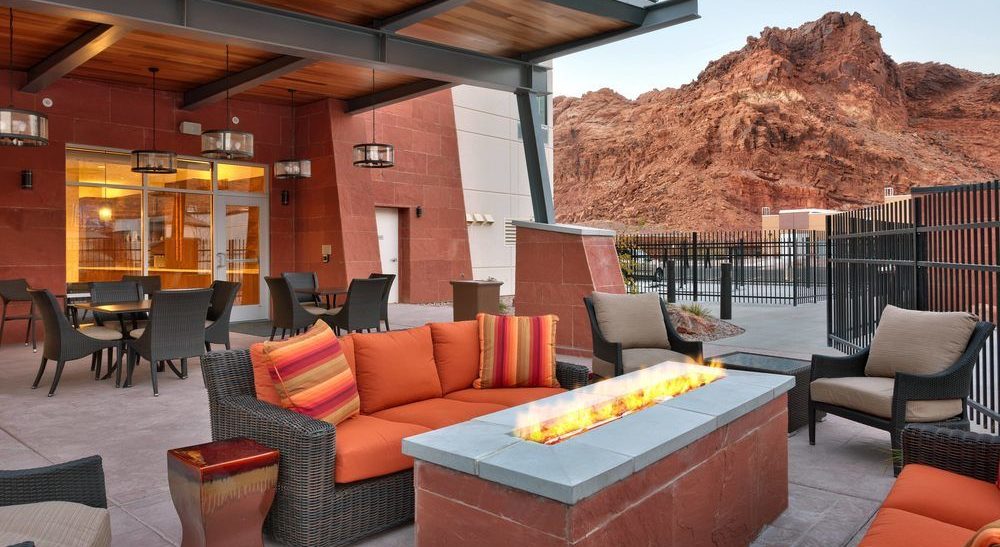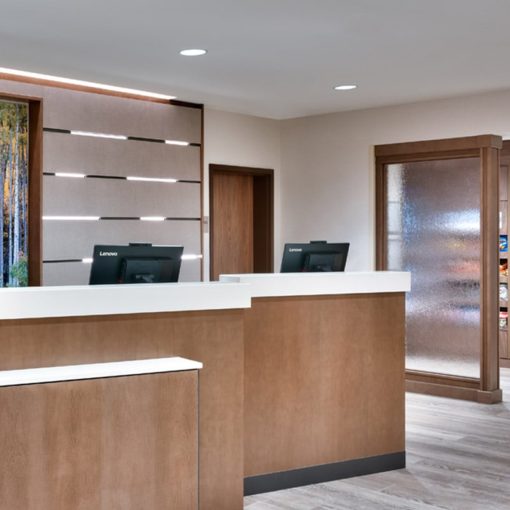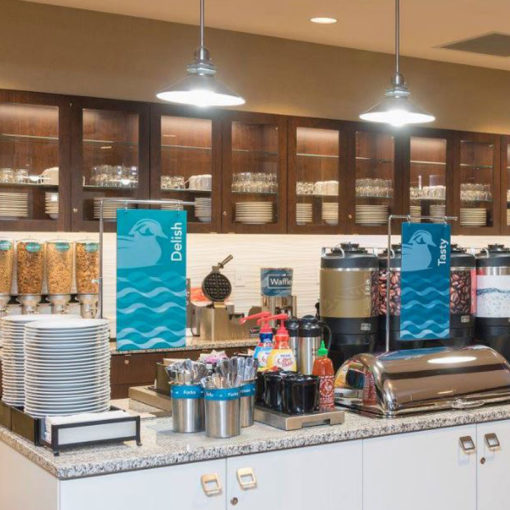How to Approach a Hotel
Renovation vs. a New Construction

Whether you’re looking to renovate your existing hotel or construct a new one from the ground up, how you approach the project will be very different. Oftentimes, a hotel will stay operational throughout a renovation, brand conversion, or brand PIP (property improvement plan) implementation. This demands specific planning to maximize guest comfort and access, while minimizing disruptions on the property. In contrast, new construction projects don’t have those same limitations, but do require implementing certain best practices for smoother logistics and a seamless experience from start to finish.
In this blog, you will learn the key differences when approaching a hotel renovation compared to a new construction, and how the Innvision team supports clients throughout all types of projects.
Key Approaches for Renovations
As mentioned, renovations, brand conversions, and PIPs typically happen in an operating hotel. This allows owners and operators to keep revenues flowing, but it requires great care and planning to limit inconveniences to hotel guests. To minimize guest disruptions, hoteliers can strategically plan when the renovation will occur (usually in a slow season with less occupancy) and how to divide the project, whether by floor, wing, or section.
It’s also important for the interior design and procurement provider to support the hotel’s management team during renovations, as it can be a very stressful time for them. At Innvision, we partner directly with hotel management and staff, planning the details to make it easier for them to continue doing their job while we do ours.
With renovations, old properties can present new challenges. Unlike a new construction, there may be outdated or nonexistent blueprints, making it difficult for a designer to produce accurate interior architectural drawings. In addition, during renovations or brand conversions, updating one specific item can lead to discovering other things that need attention. At Innvision, we have learned this from experience, which is why, when we do a walkthrough, we don’t just consider aesthetics. Instead, we attempt to look below the surface and anticipate less obvious factors that may pose a functional challenge down the road.
For example, if you are replacing a vanity, you may discover components behind the existing vanity that need a refresh, such as wall paint, flooring, lighting fixtures, or tile. Addressing these elements during the installation of a new vanity will likely be faster, easier, and more efficient than waiting until after the vanity is already in place.
FF&E logistics for renovations often have less margin for error, since they must align with the general contractor’s timing to complete certain guestrooms taken out of a hotel’s inventory temporarily. Larger items, such as case goods, upholstery, and mattress sets, often will need to ship in quantities determined by floor or by section according to a specific delivery schedule. In contrast, smaller FF&E items such as artwork or lighting can all arrive together and generally don’t require split shipments.
Key Approaches for New Construction
For new build hotels, the procurement provider’s logistics team should engage with FF&E manufacturers and the warehouse (if applicable) to coordinate shipping and delivery times with the construction and installation schedule. This is usually less nuanced than planning for split shipments in a renovation, but this does require seamless collaboration between the hotel’s ownership, management, GC, and procurement team.
The design and procurement provider should work closely with the full project team, including the architect, from the beginning to ensure everyone is aware of roles, responsibilities, and expectations. At Innvision, we review architectural plans early on to strategize FF&E selection and installation. We keep lines of communication open and move swiftly to adjust deliveries should construction be delayed.
During new construction projects, flooring usually arrives first, then wall covering, lighting, and case goods, all aligned with the construction schedule.

For this reason, it’s imperative for the FF&E provider to consistently coordinate with the general contractor and be responsive to changes in their timing that may affect desired delivery dates.
Approaches for Renovations and New Constructions
As discussed above, each hotel project is different and has its own set of dynamics and conditions. For example, JIT (just-in-time) FF&E deliveries may not be feasible for a particular project, whether renovation or new construction. In this case, the better choice may be to ship all FF&E to a warehouse for storage before staging and transferring it to the property on a schedule.
At Innvision, we consider all the factors at play for every hotel, existing or new build, including freight costs, warehousing costs, timelines, the safety of your product, and the best way to organize deliveries per the schedule. We have completed thousands of renovations and new construction projects for many different hotel brands.
With this experience comes a knowledge of the pitfalls, potholes, and potential mistakes that lie ahead, which we help you avoid. We work within the nuances and intricacies of renovations and new constructions, and our hands-on approach includes walkthroughs, site visits, and coordination with your team from the early stages to save you stress, time, and money.
If you’d like to learn how Innvision can support you in your next hotel renovation or new construction project, contact us!



